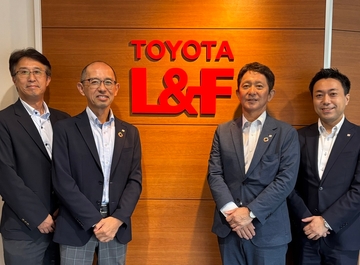On a single night in January 2020, more than 37,000 veterans experienced homelessness in the U.S., according to the U.S. Department of Housing and Urban Development. But the U.S. Department of Veterans Affairs (VA) and the nonprofit organization Community Solutions are working hard to change that through a powerful partnership under the Built for Zero initiative.
The initiative was launched to help communities achieve “functional zero,” a milestone for measurably ending homelessness for a population. Built for Zero works with more than 90 communities across the country that have committed to ending homelessness. Since launching in 2015, 12 communities have achieved functional zero for veterans, five have reached it for chronic homelessness, and three have successfully ended both.
None of this would be possible without close collaboration between the VA and local organizations, according to Reagan Harvey, a project manager for Built for Zero’s Large Cities Team. “We can’t end veteran homelessness by ourselves,” Harvey says. “We need VA, and VA needs us. With Slack, we can facilitate communication between local VA representatives and members of the community, different organizations, stakeholders and leaders.”
Moving from siloed emails to secure messaging
Harvey’s team works with the VA to end homelessness in seven major cities. Prior to the Covid-19 pandemic, the two organizations communicated in person, on the phone or via email. But as coronavirus cases spiked, in-person meetings were off the table, and the teams soon found that email chains or one-on-one phone calls were a poor substitute for collective brainstorming and problem-solving.
Complicating matters further, the VA adheres to strict security protocols when communicating with external partners. Most of the organization’s software tools exist in a protected network that outside partners can’t access, according to Harvey. This was especially tricky when VA representatives wanted to use the same software and platforms as the Built for Zero team.
Fortunately, Built for Zero already had a solution: Slack. The Built for Zero team has successfully used Slack to collaborate internally since 2018. So in 2020, when the pandemic stalled in-person touch points, Harvey suggested setting up a Slack workspace for Built for Zero and the VA.
With Slack Connect, the two organizations can seamlessly collaborate via secure channel-based messaging. “We wanted to facilitate ongoing cross-learning and sharing in one place,” Harvey says. “Because of our internal success, we knew Slack was the best tool we could use externally with VA.” Given that Slack’s enterprise-grade security features and compliance standards extend to Slack Connect, the VA maintains visibility and control, enabling its teams and partners to tap into their most powerful resource: each other.
“We wanted to facilitate ongoing cross-learning and sharing in one place. Because of our internal success, we knew Slack was the best tool we could use externally with VA.”
A shared workspace creates sustainable change
Dubbed the Learning Network, Built for Zero and the VA’s workspace is a brain trust of Built for Zero communities, including the improvement teams from seven of Built for Zero’s large cities. To stay organized and aligned, teams use Slack channels, virtual spaces to share messages, workplace automations, digital tools and files.
For example, everyone in the Learning Network workspace can find general updates and announcements in the #all-cohorts channel.
The more specific #covid channel is reserved for pandemic-related questions and resources on topics such as funding for the Coronavirus Aid, Relief and Economic Security (CARES) Act.
In various localized channels, each community has a designated systems transformation advisor to lead engagement. However, the teams quickly found that stakeholders were eager to suggest ideas, offer best practices, ask questions and share answers on their own.
Previously, conversations could stall in convoluted email chains. Now anyone can go to the appropriate channel and start a thread, a feature that organizes topics without cluttering the main conversation. From sharing resources to coordinating large-scale systems improvements, this more relaxed communication makes it easier for everyone to do their job. “There’s something different, in a good way, about the ease of firing something off in a Slack channel as opposed to setting up an email,” Harvey says.
Information sharing between the VA and Built for Zero representatives is critical for navigating housing markets and securing resources for veterans. By breaking down silos and streamlining processes, Slack helps to simplify the operational side of things. “It takes a village to end homelessness,” Harvey says. “With Slack, we can swiftly and securely collaborate with our community partners to address this issue and make veterans’ lives better.”
“We now have members from all seven communities talking to each other. They’re not just sharing within their own team but across teams and cities.”
A culture of continuous learning and collaboration
As local improvement teams start to reconnect in person, everyone will still rely on Slack to continue the conversation before, after and in between meetings. “We now have members from all seven communities talking to each other,” Harvey says. “They’re not just sharing within their own team but across teams and cities. Before, that across-team learning would’ve had to wait for the next in-person conference.”
Recently, a teammate put a request in the Learning Network workspace for information on hosting meetings with outreach teams, which meet with people experiencing homelessness. Later that day, someone shared the structure and format of that exact type of meeting. “It’s a really good example of critical information sharing,” Harvey says. “Slack allows anyone to throw a line in the pond and see what bites. Sure enough, we have a really engaged group that chimes in with what they know.”
That fluid knowledge sharing allows the VA and Built for Zero to bring to bear the full power of their collective wisdom in finding a solution. Homelessness won’t be solved overnight, but by working seamlessly together, we’re getting closer, step by step.

















